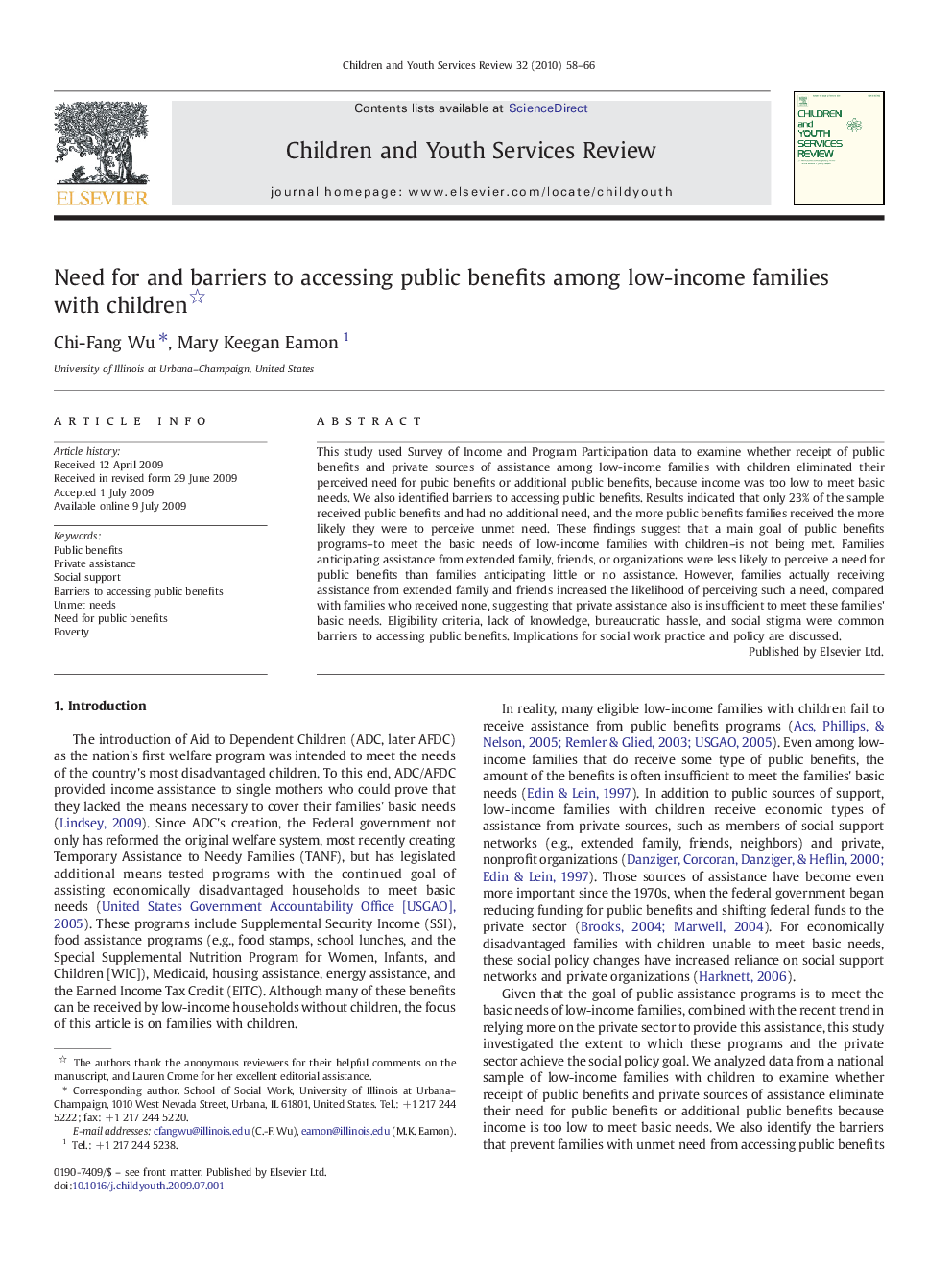| Article ID | Journal | Published Year | Pages | File Type |
|---|---|---|---|---|
| 346555 | Children and Youth Services Review | 2010 | 9 Pages |
This study used Survey of Income and Program Participation data to examine whether receipt of public benefits and private sources of assistance among low-income families with children eliminated their perceived need for pubic benefits or additional public benefits, because income was too low to meet basic needs. We also identified barriers to accessing public benefits. Results indicated that only 23% of the sample received public benefits and had no additional need, and the more public benefits families received the more likely they were to perceive unmet need. These findings suggest that a main goal of public benefits programs–to meet the basic needs of low-income families with children–is not being met. Families anticipating assistance from extended family, friends, or organizations were less likely to perceive a need for public benefits than families anticipating little or no assistance. However, families actually receiving assistance from extended family and friends increased the likelihood of perceiving such a need, compared with families who received none, suggesting that private assistance also is insufficient to meet these families' basic needs. Eligibility criteria, lack of knowledge, bureaucratic hassle, and social stigma were common barriers to accessing public benefits. Implications for social work practice and policy are discussed.
